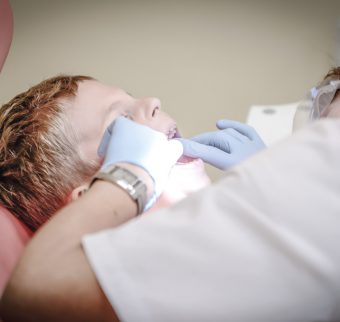Alarm over three-year-olds’ sugar rush
Youngsters consuming double the WHO recommended limit
Researchers from the Dublin Dental University Hospital at Trinity College have found that three-year-olds in Ireland are consuming on average 10 level teaspoons of ‘free sugars’ – those added to processed food and those naturally occurring in fruit juices and so on – a day; more than double the amount recommended by the World Health Organisation.
The study, published in the European Journal of Nutrition, used a modified algorithm to estimate the free sugar intake in Irish three-year-old pre-schoolers using data from the National Preschool Nutrition Survey (NPNS) and the Growing Up in Ireland survey (GUI). The results indicate that 75% of three-year-olds had free sugar intake greater than the maximum recommended by WHO guidelines for free sugar intake, while only 4% met the lower threshold.
The ideal recommendation by WHO is to further reduce the amount of free sugar to a maximum of four-to-five teaspoons, if possible, and aim towards a maximum frequency of once per day of sugary foods and drinks.
‘Fruit juices and smoothies’, ‘dairy products’ (including yoghurts and fromage frais), ‘soft drinks’ (including squashes, cordials and fruit juice drinks), ‘confectionary’ (chocolate and non-chocolate) and ‘cakes and biscuits’ were the key food sources for free sugar, contributing to more than three-quarters of total free sugar intake.
Michael Crowe, lead author of the study, said: “Free sugar intake is excessively high, even at this early age, and reducing the consumption, especially snacking, of low nutrient, discretionary food and drink should be a helpful approach to achieving an overall reduction in free sugar consumption.”
He said children’s snack choices are dominated by foods high in free sugars so substituting these snacks with healthier alternatives would seem one obvious dietary strategy to help reduce free sugar intake. The study shows that ‘chocolate’ and ‘non-chocolate confectionary’ and ‘cakes and biscuits’ are commonly consumed as snacks, which means that they could be cut or replaced with healthier alternatives in order to reduce the frequency and amount of sugar throughout the day.
The results have relevance for both the general and oral health of pre-schoolers as a high sugar intake affects both aspects of health. As well as concerns about establishing unhealthy eating patterns at an early age that may influence obesity risk, sugar intake is a key risk factor in the progression and reversal of early dental caries. The prevalence of oral health problems in young children has increased in recent years, following a decline in previous decades. Early childhood caries is the most prevalent dental problem in pre-schoolers, one of the most common causes of hospital admission and the most frequent reason for unplanned general anaesthesia in children.
As highlighted by the team’s analysis and that of previous researchers ‘RTEBC’ (ready to eat breakfast cereals) and ‘fruit juices’ are items of consumption that have become difficult to classify as ‘healthy’ or ‘unhealthy’ as they can be an important source of nutrients for young children but also contain relatively high levels of free sugar. The analysis also highlights the lack of standardised methods for free sugar estimation and the importance of using appropriate methods for quantifying sugar intake at the food level.
Currently, food manufacturers in the EU are not required to include free sugar content in their labelling which makes it difficult for consumers to quantify their consumption. It is also difficult for consumers to understand the different types and sources of dietary sugars and questionable as to whether they could use this information to attempt to meet the WHO guidelines.
The researchers say the findings should help dentists and dental hygienists to understand the specific food and drink patterns to focus on when carrying out dietary risk assessment and counselling for pre-school children and to be aware that most children do not meet the WHO population guideline.
Source: Estimation and consumption pattern of free sugar intake in 3-year-old Irish preschool children. Crowe, M. O’Sullivan, M. Cassetti, O. et al. Eur J Nutr (2019).
Tags: children, Paediatrics, sugar

